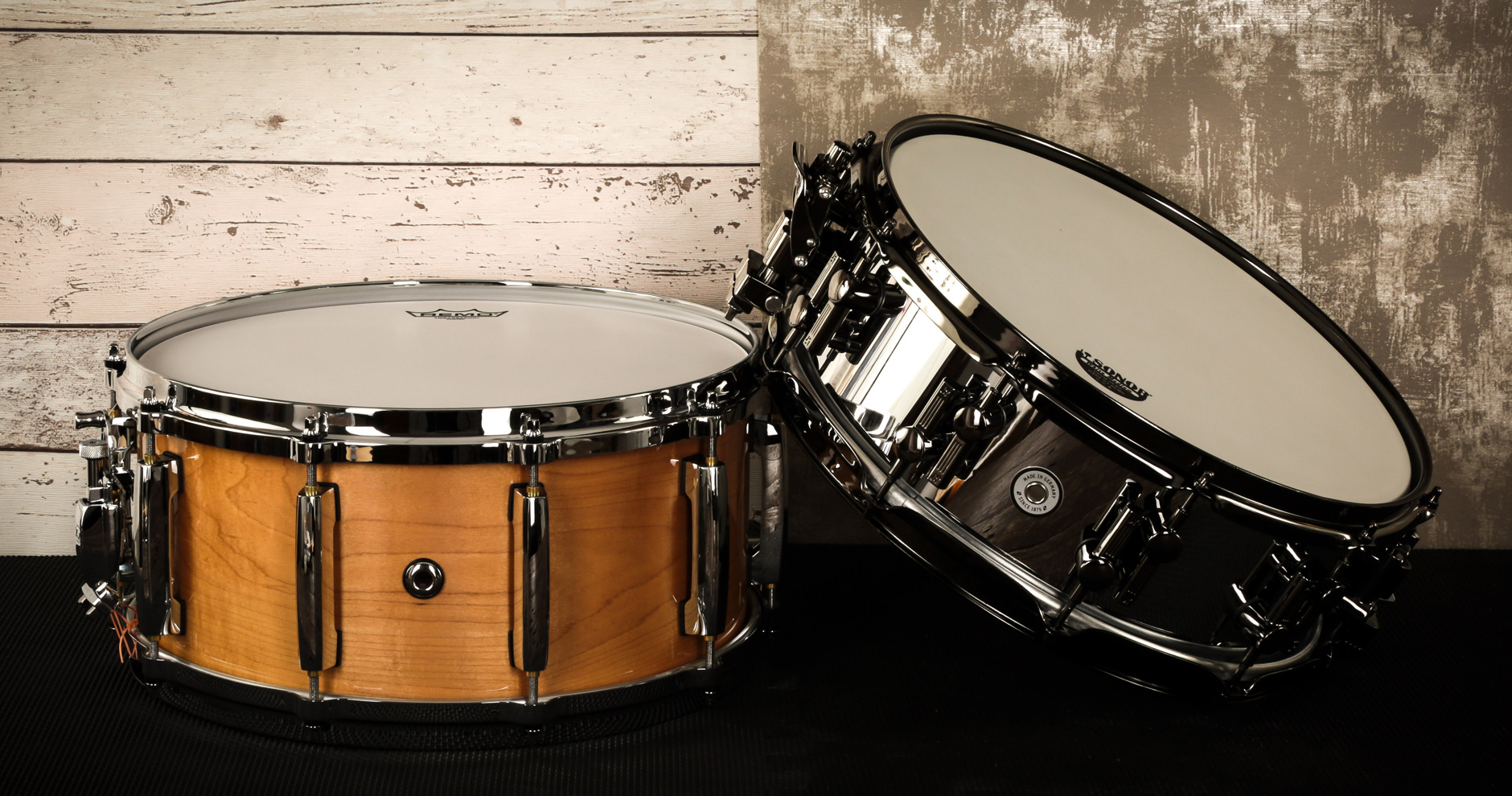There’s an awful lot of choice when it comes to snare drums. Different varieties offer different sounds, responses and aesthetics depending on your style. These varieties differ in terms of shape, size, skin, hardware, tuning – the list goes on. But arguably, the most important aspect to consider is the material.
The bottom line is this: wood or metal? In this article, we’ll dig deep into the primary differences between the two. We’ll start off by looking at the different types of wood!

Most Popular Snare Drum Woods
- Birch – birch offers a punchy sound with lots of attack. They tend to have a brighter, more focused sound with a slightly shorter sustain.
- Maple – slightly more well-rounded than Birch, but still with a healthy bass response. They have a slightly warmer tone that’s slightly more resonant.
- Beech – this hardwood offers a balanced tone not dissimilar from Maple, but with a slight mid-boost and accentuated low-end. Great for a super-fat snare sound.
- Mahogany – known for a rich warmth and resonance in the bass and low-mid frequencies. Mahogany used to be a gold standard for shells, so it is associated with a vintage sound.
- Poplar – a softer wood with a well-balanced tone. It has a focus on low-end, but not quite as much as mahogany. It has a good balance of attack and sustain, making the poplar snare quite versatile.
- Bubinga – a super dense wood, bubinga shells typically have a deep, dark tone with a rich, fat low-end sound. They tend to have loads of attack, so they’re great for drummers who need to cut through the mix a bit more.
- Walnut – walnut drums tend to have a quite dry sound with little resonance. They’re fairly dark and mellow-sounding but with a great ‘crack’ when you lay into the drum.
Popular Wooden Snare Drums
Most Popular Snare Drum Metals
- Brass – as the earliest metal snare material, brass is the most familiar. Accentuated top-end but not without some bass/low-mid warmth.
- Aluminium – a sharp, dry sound with a sparkling treble response. Great for cutting through pretty much any mix, but not for the faint-hearted.
- Steel – boosted mids and even more treble than aluminium, Steel also offers improved sustain and presence. Generally, it’s pretty affordable too.
- Copper – a darker, more rounded sound with less emphasis on top-end and a warmer response in the bass and mids. Often found in orchestral ensembles.
- Bronze – often used for cymbals but far less common for shells. Tend to offer a warmer and darker tone with a lot of resonance. Capable of a wide range of tunings and have a massively powerful sound.
Popular Metal Snare Drums
In summary
It depends on what you’re after – once you know that, you’ll be able to narrow down your choice. What isn’t immediately obvious is that wood and metal snares aren’t as drastically different as they once were. In a nutshell:
- Sound – yes, metal snares generally sound brighter, whereas wooden ones sound more resonant. However, you can now get a metal snare that offers a fair bit of warmth and sustain; similarly, opt for a Birch wooden snare for an immediate, pronounced attack. Consider the sound you’re after and consult the choices above to hone in on the material that’s right for you!
- Price – Some materials can be a bit pricier sometimes, like bell brass or bronze, but overall it’s a pretty even playing field, so focus more on the sound than the price tag!
- Looks – I mean, there’s no right or wrong answer here. Personally, if I were shopping based purely on looks, I’d go for a nice Maple grain. Fancy something blingy? Try Steel or Brass. Fancy an eye-popping finish? Any material will do, perhaps a wood with a less-pronounced grain.
- Practicality – we may be stating the obvious, but metal snares can be a tad heavier. Consider where your snare will be: at home? In the studio? On a plane every week? If you’re travelling frequently, consider your shell’s weight!



Responses & Questions